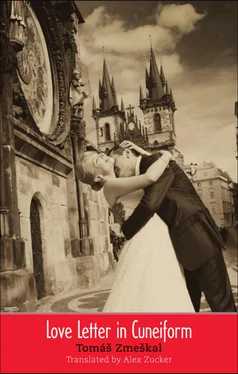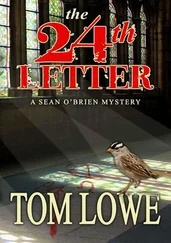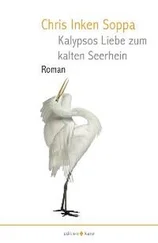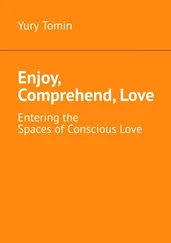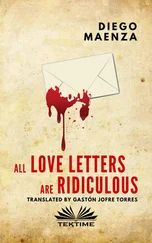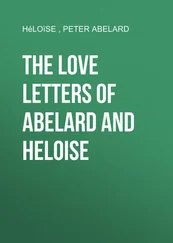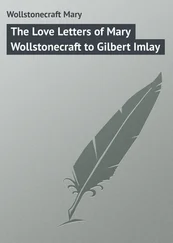“You have a happy life ahead of you, children,” said Josef’s future mother-in-law. “The fact that the war has come to an end in our country, and that the American and Russian armies have come together here and defeated fascism, means that all our problems will soon be solved. You have a truly beautiful life ahead of you. Mankind has always been able to learn from its experience. Two wars in twenty years, why, that’s absurd. It can’t happen again. Children, you have a happy life ahead of you.”
Květa’s mother was rather moved by her short speech, but she noticed Josef whispering something to her daughter. Květa quietly laughed. She had eyes only for him, as they say, and it was obvious neither one of them had been listening to her at all.
The quotation from Macrobius in the epigraph is a description of the three-headed creature at the feet of the sun god Serapis in the temple in Alexandria, from Saturnalia , Book I, Chapter XX, fifth century A.D.
The Bertrand Russell quotation comes from his introduction to Wittgenstein’s Tractatus Logico-Philosophicus .
In Chapter 20, I draw on the excellent book by Miroslav Moutvic, Pražské vzorkové veletrhy 1920–1951 . I wish to thank him here.
T. Z.
In 1999 Tomáš Zmeškal, a high school English teacher, began writing his first novel, Milostný dopis klínovým písmem ( Love Letter in Cuneiform ). He completed it in 2003 and spent years trying, without success, to find a publisher. Finally a friend brought it to Viktor Stoilov, founder of Torst, the most important Czech literary press to spring up after communism crumbled in 1989, and in 2008 Zmeškal’s debut appeared to near-universal acclaim. It finished second in the Prague newspaper Lidové noviny ’s Book of the Year survey of authors, editors, publishers, and critics; was shortlisted for the Magnesia Litera Award for Prose; and won both the Josef Škvorecký Prize and the European Union Prize for Literature. The novel sold more than ten thousand copies in its first three months in print and is now in a second edition — in a country of ten million people, that makes it a best-seller.
Love Letter in Cuneiform spans (although not in chronological order) the twentieth century’s latter half in Czechoslovakia, from the end of World War II and the Communist Party’s seizure of power in 1948 to the Party’s downfall in 1989 and the years immediately following. Where is the line between sanity and insanity? Are there limits to human love? Is there God? These are a few of the lightweight questions Zmeškal explores in his novel. At its core it could be called a family saga: the story of Josef Černý, a structural engineer who ends up a political prisoner (what for we never learn: “The reason is irrelevant now,” as Černý drily notes); his wife, Květa; their daughter, Alice; her husband, Maximilian; and Alice and Maximilian’s son, Kryštof. Also figuring in the plot are Jiří/George, the cousin from London, and the psychiatrist Antonín (aka Toník or Tonda) Lukavský, a family friend who serves as a linchpin to Marek Svoboda, a delusional pastry chef whose visions, scattered across three chapters, detour into the realms of philosophy, theology, and literary theory, with an excursion or two into fantastical versions of history, and a chilling foreshadowing of the surveillance-plagued society that we inhabit today. The other significant character, Hynek Jánský, isn’t a family member but a close friend of both Josef’s and Květa’s who tears their marriage apart over the course of the most emotionally disturbing scenes in the novel.
What follows is a brief sketch of where Love Letter in Cuneiform fits, and doesn’t fit, into the context of Czech literature. My observations come from the point of view of a translator rather than a scholar, meaning they are intended more as a suggestion of which directions to look in, which corners to peer around, than as any kind of authoritative or critical interpretation.
Most Czech reviewers sought, in their assessments of the novel, to compare Zmeškal to other successful Czech authors who have cropped up in the decades since the Velvet Revolution: Jáchym Topol, Petra Hůlová, Emil Hakl, Martin Ryšavý, Radka Denemarková, and the half-dozen or so others most often chosen to represent the “post-1989” generation at literary events, both at home and abroad. These reviews focused on the fact that Zmeškal was a new author, a “new voice” (though, at age forty-two, he couldn’t rightly be called young), and that while most of Love Letter takes place under communism, the novel plays out in the realm of personal relationships, with history and politics as an underpinning or backdrop rather than the subject matter as such — a hallmark of post-Velvet writing, distinguishing it from the “evergreens” of late-twentieth-century Czech fiction, especially those best known in English: Milan Kundera, Ivan Klíma, Josef Škvorecký, and (to some degree) Bohumil Hrabal. Yet a few of the book’s reviewers dug a little deeper, as well as farther afield, and my own feeling is that this is where the most fertile ground is to be found for contextualizing Zmeškal and his first novel. Among the Czech writers compared to Zmeškal, Jiří Gruša makes the most sense to me. Certainly there are at least surface parallels between Love Letter and Gruša’s most famous novel, Dotazník aneb Modlitba za jedno město a přítele (1975; translated by Peter Kussi into English in 1982 as The Questionnaire, or, Prayer for a Town and a Friend ), described by one Czech critic as having a “Kafkaesque labyrinthine quality and an Orwellian eeriness.” Moreover, Love Letter shares with The Questionnaire a reveling in science, religion, mythology, and the surprising ways in which they overlap and intermingle. Another Czech author fascinated by the connections between science and spirituality is Martin Vopěnka, a former astrophysicist whose Pátý rozměr (2009; slated for publication in Hana Sklenková’s English translation as The Fifth Dimension in 2015) includes a reflection on the relationship of meditation to black holes. Looking outside the Czech realm, how can anyone today use the word labyrinthine in association with literature and not instantly think of Borges? Apart from Love Letter ’s nonlinear narrative structure (and the “forking paths” of the garden in the opening of Chapter 6), it also exhibits some Borgesian mythogenic blending of fact and fiction: as in, for example, Chapter 11, “Second Vision of Immortality,” with its ingenious reimagining of the world-famous astronomical clock on Prague’s Old Town Square as a time machine involving particle accelerators and decelerators (the latter a Zmeškal invention, which he found out actually existed six months after the novel was published). Finally, one author I have not seen mentioned in any Czech review: Philip K. Dick. Although on its surface the world of Zmeškal’s first novel may bear little resemblance to any Dickesque reality, underneath it’s roiling with more than enough paranoia and slippery identity to fill the pages of any Dick fiction.
Zmeškal was born in Prague in 1966 to a Czech mother, Anna Zmeškalová, and a Congolese father, Joseph Lukoki, making him the first “Afro-Czech” writer, as he refers to himself. His mother came from a village called Běleč, near the city of Kladno, famous as the birthplace of Czech heavy industry, with coal mining dating back to the mid-eighteenth century and iron production to the mid-nineteenth. His mother studied several foreign languages (English, German, Spanish, French) and had a knack for them, but worked much of her life in dull office jobs dealing with foreign trade. His father was an intellectual, a student of economics, who traveled thirty-seven hundred miles overland from Léopoldville, capital of the Belgian Congo, to Conakry, in Guinea, then another thirty-two hundred miles in the air to the capital of the Czechoslovak Socialist Republic, in November 1959, under an assumed name, to win support for the soon-to-be independent Republic of Congo.
Читать дальше
